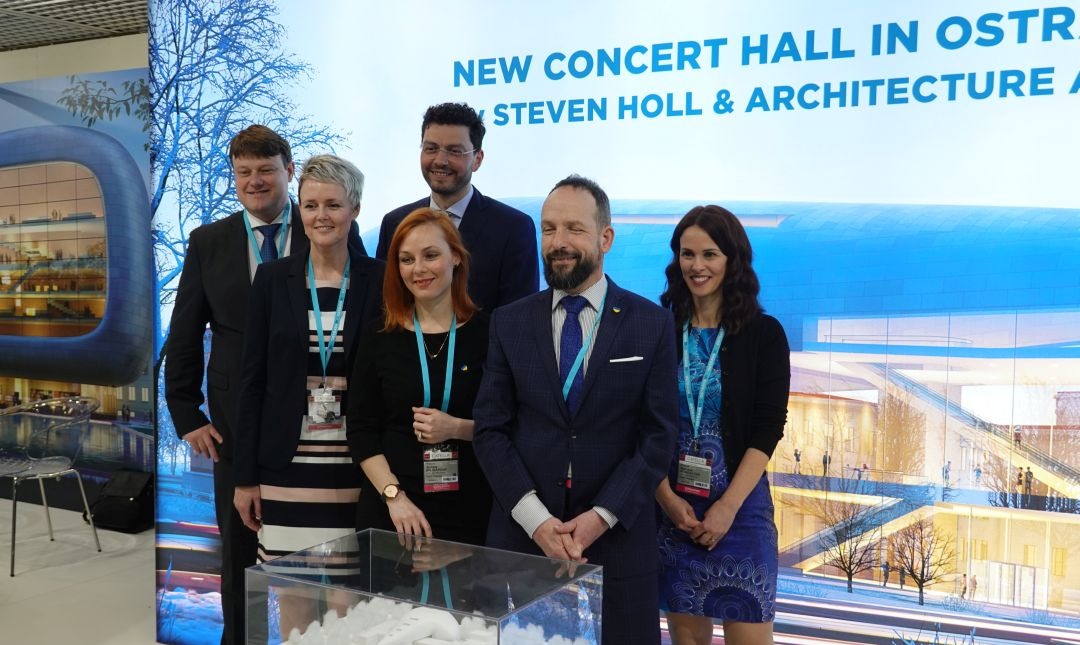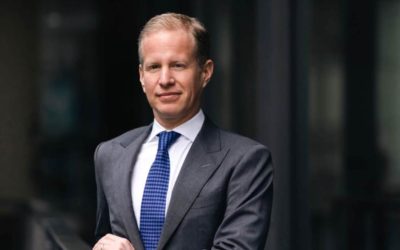I’ve been interviewing Ostrava’s mayor Tomáš Macura at MIPIM for years now, but it was always in connection with industrial zones or technology parks the city was promoting. Having not seen him since the last MIPIM in 2019, I found myself interested in the (seemingly) sudden rush of public architectural competitions that keep putting the city in the news. I was also curious why he’d stayed on as mayor so much longer than he’d planned. (And I hope he’ll forgive me for the picture with his eyes closed.)
When I first interviewed you at MIPIM, you thought you’d only be in office for four years.
Yes, but one term isn’t long enough to move the rudder of the city in some fundamental way. It’s not like in the corporate sphere, where four years is quite a long time.
It’s the blink of an eye in the life of a city.
And I’m now at a point where my second term is coming to an end and I’m really trying to decide what’s next. Two-thirds of my second term were impacted by Covid, now the Ukrainian crisis. That means that we had entirely different priorities and. like it or not, we couldn’t spend the energy on a whole range of projects. And now the prices for all of the projects we planned are rising.
It’s not as if you haven’t achieved anything. When I speak with investors and developers that Ostrava has established a reputation as a progressive city.
I’m not saying we haven’t accomplished anything. But I’m always my biggest critic. I’m pleased that we managed to put together a team of people that really give everything for the city. That they’re not just politicians who are just carrying out classic political agendas. We all care about the development of the city. And it’s a joy to work with such people.
What have your priorities been and what are your benchmarks for success?
When we speak with people and ask them what’s important to them, they say they want a future in the city. They want a clean environment, quality public space, quality schools, housing and so on. This is a given in other cities, but it wasn’t for us. It wasn’t a priority before. And when we say publicly what our goals are and that they’re important to us, people listen, and they support us.
One of your goals appears to be to improve the quality of architecture in the city. That seems to be the message behind the architectural competitions you’re holding. Why is that so important?
The concert hall wasn’t my idea or my colleagues’. Ostrava competed for the European capital of culture in 2015 and the concert hall was part of the concept. In fact, Ostrava has been trying to build a concert hall for 160 years. During that time there were six attempts, but they all failed. We think the seventh one will be successful.
Lucky number 7?
Yes, that’s our motto. Anyway, the concert hall was the idea of my predecessor Petr Kainar. We revived the project in 2017. We held the architectural competition and in 2022 we’ll start building. So, in just a few years, we’ve overtaken Brno, which was 10 years ahead of us. Some people ask, “what’s the point of a concert hall for classical music for when only around 10,000 from Ostrava will actually go there, not 300,000?” I say, it will raise the prestige of the city. That Ostrava can become a cultural metropolis. Tourism will increase. People who go to Sydney all want a picture of themselves in front of the city’s opera house. And we have the example of our neighbors in Poland who built 10 high quality concert halls in the last 12 years in cities that are far less advanced than Ostrava. When I speak with the Polish mayors of those town, they say “you wouldn’t believe how it raised the cultural live in the city.” It’s not just about the building itself, but that it’s a sort of incubator for the creative industry. There are recording studios and various other studios for creative work. It’s all part of a mosaic.
How important is P3’s project in that regard?
You could see P3’s architectural competition for its new center as part of that trend. Ostravans connect the location of that project with the red and white chimney that stood there. It always had a sort of orange fox tail of smoke coming out of it. It was part of the Vitkovice agglomeration where poor quality iron ore was processed, creating a lot of pollution. Those of us who have lived here for a long time always associate that location as a symbol of the devastation of Ostrava’s natural environment. The construction of a quality logistics and administrative complex designed by a quality architect with a lot of greenery is an extremely significant symbol of the city’s rebirth. We see it as absolutely correct — even normal these days — that even though it’s an entirely private piece of land, the investor and the architect approach the city and asks: is it alright if we do it this way? How can we improve it?
Also in ThePrime
3Things: PSN in P6, euro accounting by 24, and Prague property deals





